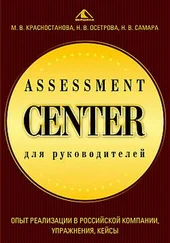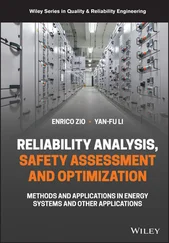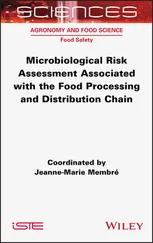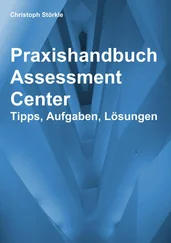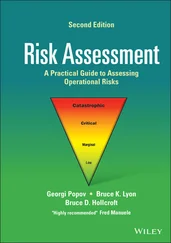The original definition of the precautionary principle is given in principle 15 of the UN declaration from Rio in 1992 (UN 1992):
Definition 5.4 (Precautionary principle)
Where there are threats of serious or irreversible damage, lack of full scientific certainty shall not be used as a reason for postponing cost‐effective measures to prevent environmental degradation.
The precautionary principle is invoked where
There is good reason to believe that harmful effects may occur to human, animal, or plant health, or the environment.
The level of scientific uncertainty about the consequences or frequencies is such that risk cannot be assessed with sufficient confidence to inform decision‐making.
Invocation of the precautionary principle may be appropriate with respect to, for example, genetically modified plants where there is good reason to believe that the modifications could lead to harmful effects on existing habitats, and there is a lack of knowledge about the relationship between the hazard and the consequences. A contrary example is that of the offshore industries, for which the hazards and consequences are generally well understood and conventional assessment techniques can be used to evaluate the risk by following a cautionary approach. Invocation of the precautionary principle is therefore unlikely to be appropriate offshore.
The European Commission has provided guidance on when and how to use the precautionary principle (EU 2000). Studies have shown that the practical implementation still varies significantly (Garnett and Parsons 2017). The decision when to invoke the principle seems to be poorly defined, and there are indications that less evidence is required if the issue is related to harm to people compared to the environment.
Example 5.4 (Deliberate release into the environment of GMOs)
EU Directive 2001/18/EC (EU 2001) is concerned with the deliberate release of genetically modified organisms (GMOs) into the environment. The directive states that risk related to release of GMOs need to be controlled, both related to people and ecosystems. It is therefore necessary to take preventive actions. The precautionary principle has been followed in the preparation of the directive and it should also be taken into account in its implementation. Further, “No GMOs [  ] intended for deliberate release are to be considered for placing on the market without first having been subjected to satisfactory field testing
] intended for deliberate release are to be considered for placing on the market without first having been subjected to satisfactory field testing  .” There is no requirement for any indications that this may be hazardous to trigger field testing. All EU member states have to approve the field test, placing a high burden of proof on those who want to introduce GMOs. Further, monitoring is required after it has been introduced, implying that if any of the EU members are not satisfied, the GMO may also be prohibited for use in the future.
.” There is no requirement for any indications that this may be hazardous to trigger field testing. All EU member states have to approve the field test, placing a high burden of proof on those who want to introduce GMOs. Further, monitoring is required after it has been introduced, implying that if any of the EU members are not satisfied, the GMO may also be prohibited for use in the future.
5.4 Risk Acceptance Criteria for Other Assets than Humans
The discussion above is primarily concerned with risk to humans. For other types of assets, other considerations may apply. Brief comments are given on the two most important, environment and economic risk.
Environmental RACs are based on the principles discussed earlier in this chapter. The ALARP principle is commonly applied and the precautionary principle was originally developed specifically for environmental applications. The underlying principles of the ALARP principle can be applied to environmental consequences, although the term “environment” covers an extremely wide range of vulnerable assets, from natural beauty, to individual species (being it animals, insects, fish, plants, etc.), to complete ecosystems. Comparing these and assessing the risk on a consistent level is clearly challenging.
Economic considerations are usually simple, and risk acceptance can in most cases be based solely on cost–benefit analysis. The option with the highest benefit is normally the preferred option. In some cases, consideration of worst‐case consequences may be necessary. This is because the consequences in some cases may be catastrophic, in the sense that a company goes bankrupt if certain events occur. In such circumstances, this may override a criterion based purely on costs and benefits.
There has been an ongoing discussion in the scientific community regarding the adequacy of RAC for making decisions about risk. Among the critics is Terje Aven (e.g. see Aven 2007 ; Aven and Vinnem 2005), who questions the use of RAC from a decision theoretical and ethical perspective. Risk acceptability evaluations must be based on ALARP‐considerations, he claims, and not static criteria that fail to address the relationships among risk, benefits, and improvement. In view of the fact that the benefits we gain from accepting a risk weigh so heavily, it may be reasonable to argue that we do not need a specific upper limit, but rely solely on weighing risk against benefits.
Johansen (2010) takes a more pragmatic perspective by suggesting that RAC should be evaluated according to their feasibility to the decision‐maker and the extent to which they promote sound decisions. The first issue is primarily a matter of how we measure risk, and the ability of different measures to rank alternatives and provide precise recommendations with little uncertainty. The second is a matter of how the criteria are derived (e.g. MEM versus ALARP) and the extent to which they encourage improvement or preservation of status quo and allow for balancing risk with other considerations. Although useful for evaluating risk, it is recommended that practitioners interpret RAC as guiding benchmarks rather than rigid limits of acceptability.
1 5.1 Acceptable risk is dependent on context and values. Find examples where there are differences in what risk we accept. Why do you think there are differences?
2 5.2 In discussions about oil exploration offshore, there is often disagreement between environmentalists and oil companies about what the risk and what can be tolerated. Identify reasons why they may have such different opinions.
3 5.3 What are the main differences between the GAMAB and the MEM principle?
4 5.4 Can you think of examples of hazardous activities that we still choose to do because they are useful to us? What is the risk and what are the benefits?
5 5.5 Three “pure” principles of risk acceptance are described in the chapter, equity, utility, and technology. List advantages and disadvantages of each of these principles if we apply just one of them for establishing RAC.
6 5.6 A risk analysis has been performed, and the risk has been calculated at 0.05 fatalities/yr. A risk reduction measure has been proposed and if this is implemented, the risk will be reduced to 0.04 fatalities/yr (20% reduction). The cost of this risk reduction measure is 1 million in investment and 0.2 million in operating costs. The risk reduction measure will have an effect for 20 years. For cost–benefit purposes, VSL is set to 25 million. Perform a cost–benefit analysis and decide if the risk reduction measure has a positive cost–benefit or not.
7 5.7 The results from a risk analysis will always be uncertain to a greater or smaller degree. For the case in the previous problem, the risk analyst has informed us that the initial risk estimate of 0.05 fatalities/yr is uncertain, and that it is likely that the risk is somewhere in the range 0.01–0.08 fatalities/yr. How will this uncertainty affect the results of the cost–benefit analysis (assume that the reduction in risk always is 20%)? What does this tell us about decision‐making based on results from risk analysis?
Читать дальше
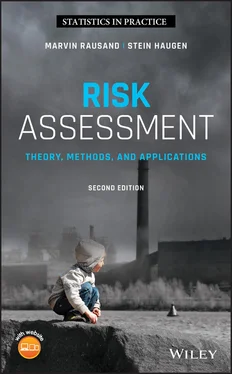
 ] intended for deliberate release are to be considered for placing on the market without first having been subjected to satisfactory field testing
] intended for deliberate release are to be considered for placing on the market without first having been subjected to satisfactory field testing  .” There is no requirement for any indications that this may be hazardous to trigger field testing. All EU member states have to approve the field test, placing a high burden of proof on those who want to introduce GMOs. Further, monitoring is required after it has been introduced, implying that if any of the EU members are not satisfied, the GMO may also be prohibited for use in the future.
.” There is no requirement for any indications that this may be hazardous to trigger field testing. All EU member states have to approve the field test, placing a high burden of proof on those who want to introduce GMOs. Further, monitoring is required after it has been introduced, implying that if any of the EU members are not satisfied, the GMO may also be prohibited for use in the future.



